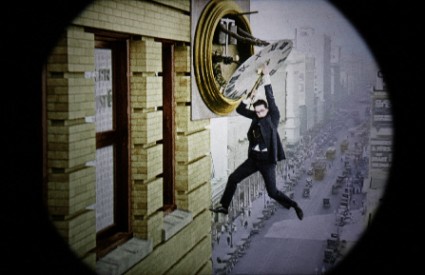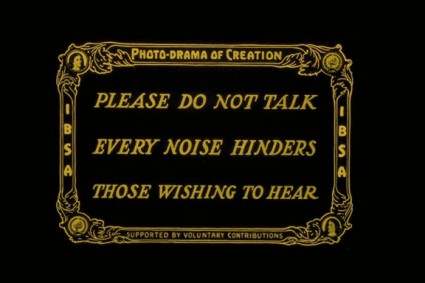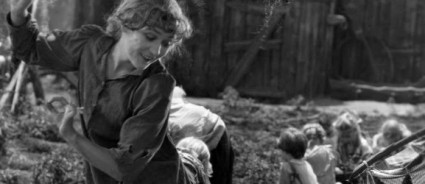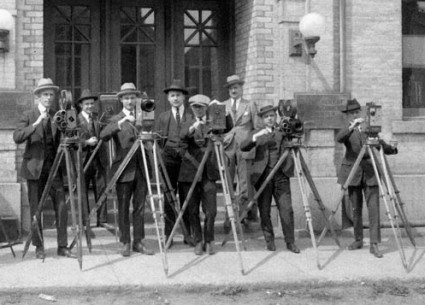
The digitised newspapers section of Australia’s digital library Trove
For some while I’ve been saying we needed an updated round-up post on the collections of digitised newspapers that now exist online. At last its time has come.
The number of historic newspapers titles now available online, either free or through a variety of pay-models, is now prodigious. Though there are some individual titles of particular importance for the study of silent film topics (and I’m referring to general newspapers rather than specialist film journals), this post covers general directories and portals.
British Newspapers
The British Library is engaged on a massive digitisation programme for British newspapers up to 1900. Two million pages have been digitised so far for 19th century newspapers, though the majority are available online to UK higher and further education users only (a checkbox enables searches across free content only). A further 40 million pages will be added in time, with a subscription model aimed at all users. Among the papers covered is The Era, an important source of information for film exhibition in the UK in the 1890s.
Chronicling America
This is a newspaper digitisation programme sponsored jointly by the National Endowment for the Humanities and the Library of Congress as part of the National Digital Newspaper Program. It covers newspapers published 1860-1922 for the following states: Arizona, California, District of Columbia, Florida, Hawaii, Illinois, Kansas, Kentucky, Louisiana, Minnesota, Missouri, Montana, Nebraska, New York, Ohio, Oklahoma, Oregon, Pennsylvania, South Carolina, Texas, Utah, Virginia, and Washington. Papers available include The San Francisco Call, The New York Sun, The Washington Times, The Colored American, and The New York Evening Times. Currently there are some 2.7 million pages from 348 titles, all free to use.
Gallica
Gallica is the digital library of the Bibliothèque nationale de France. Established in 1997, today it contains nearly 1.5 million digital documents. The library includes just under 800,000 periodical pages, including Le Figaro and L’Humanité. The content is all French, of course, and is a mixture of free and paid-for content.
Google News Archive
Google’s news search engine browses historic news resources, both free and subscription-based, so you are offered tantalising glimpses of news stories that can be yours if only you’ll pay. The helpful timeline feature shows you in which period your search term shows up the most. The Google News display is a listing all of the freely-available digitised newspapers on the service (mostly American), which allows you to browse the pages of individual titles by decades, year, month, week or day.

The Easton Free Press reports on Edison’s latest invention, 10 March 1894, from Google News Archive Search
ICON: International Coalition on Newspapers
Listing of past, present, and prospective digitisation projects of historic newspapers worldwide.
News Archives
This is a very useful directory of news sources online, provided by the University of North Carolina’s ibilio information database. It provides links and descriptions (including access information) for news archives (current and historical) from around the world, including U.S. News Archives on the Web, Asian News Archives on the Web, Canadian News Archives, and the particularly useful International News Archives on the Web, covering Central America & Caribbean, South America, United Kingdom and Ireland, Europe, Middle East, Africa, and Australia & New Zealand.
NewspaperARCHIVE
NewspaperARCHIVE describes itself as the world’s largest online archive of historical newspapers. It has tens of millions of newspapers pages and says that it is adding a page a second to the site. Although the greater part of the archive is American newspapers, there are also papers for China, Ireland, South Africa, Denmark, France, Germany, Japan and especially the United Kingdom. It lets you know your search results for free, but access is for subscribers only. Annual membership starts at $5.99 per month (for a 12-month period).
Newspaper Archive Sources on the Web
The Library of Congress’s useful listing of online newspaper directories around the world.
Old Fulton NY Post Cards
This is a private collection of digitised New York newspapers, which boasts over 15,000,000 pages, dating 1795-2007. The source of the newspapers is a microfilm set of the State of New York Newspaper Project of the 1970s/80s, and it’s unclear how a private individual is able to publish all this, but it exists, and all for free.
Papers Past
This excellent site contains over one million freely-available pages from sixty-one digitised New Zealand newspapers and periodicals covering the period 1839 to 1945. The search and presentation tools are a model of their kind.
Trove
Trove is a discovery tool for information on Australia and Australians. It is the digital library par excellence, praised highly when first reviewed by the Bioscope when it was in beta mode). The newspaper section of the site presents the results of the on-going Australian Newspapers Digitisation Program: an eventual 4.4 million pages covering a range of titles from every state and territory, from the earliest newspaper published in Australia in 1803 through to the mid 1950s. To date 1.87 million pages are available online, with exemplary discovery tools.
UK Press Online
Paid access service to two million British newspapers, chiefly boasting the Daily Mirror archive (1903 – current) and the Daily Express archive (1900 – current).
Wikipedia: List of online newspaper archives
This is probably the fullest single listing of newspaper titles available online, both free and pay. It covers Australia, Austria, Belgium, Bulgaria, Cambodia, Canada, Caribbean, Croatia, Czech Republic, Estonia, Faroe Islands, Finland, France, Germany, Hong Kong, Iceland, India, Ireland, Israel, Italy, Kenya, Latvia, Luxembourg, Mexico, Namibia, Netherlands, New Zealand, Norway, Pakistan, Philippines, Portugal, Russia, Singapore, South Africa, Spain, Sweden, Switzerland, Turkey, Uganda, United Kingdom, United States, Zanzibar, and Worldwide.
And there are many more. Others you should try out include ANNO (Austrian Newspapers Online – all free), the California Digital Newspaper Collection (free – and excellent for silent film research), the Caribbean Newspaper Digital Library (free), Iceland’s Timarit.is (free), Irish Newspaper Archives (subscription), and NewspaperSG covering English-language newspapers published in Malaya and Singapore 1831-2006 (free).
There are many more national services and paid services, links to which you are going to find among the directories listed above. But if you have particular favourites do let me know (especially if they have proved useful in researching silent film topics).
I’ll endeavour to keep this post up-to-date as a reference source. Meanwhile, you can always browse previous Bioscope posts on digitised newspapers, other periodicals and film journals under the Digitised Journals category.















